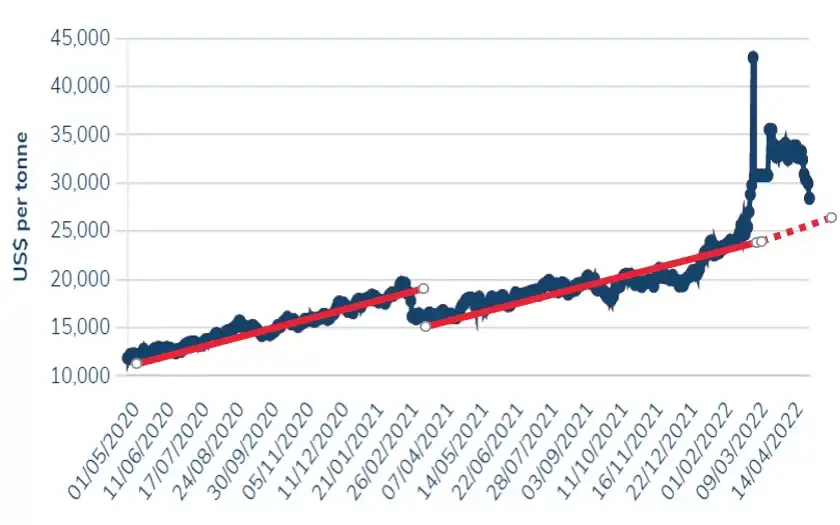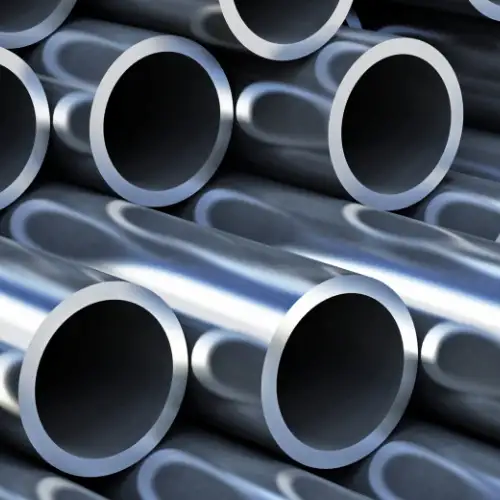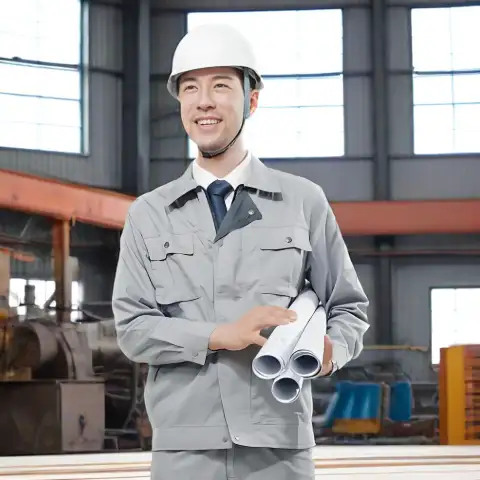A nickel alloy is a metal that contains nickel as its principal or most abundant element, combined with other elements to enhance specific properties. These additions can include chromium, iron, molybdenum, copper, and a host of others, each imparting unique characteristics to the final material. The result is a class of alloys renowned for their exceptional corrosion resistance, high-temperature strength, and special magnetic and electronic properties. We often refer to these materials as "superalloys" when they are destined for the most demanding applications, a testament to their remarkable performance under extreme conditions. Their versatility makes them indispensable in a vast array of industries, from the depths of the ocean to the far reaches of space.
ニッケル合金とは
As seasoned professionals in the metallurgical field, we've spent decades working with these incredible materials. What makes them so special? In essence, it's their sheer adaptability. By carefully controlling the alloying elements, we can tailor a nickel alloy to resist aggressive chemicals, withstand blistering heat, or exhibit unique physical properties. This isn't just about mixing metals; it's a precise science, a form of materials engineering that pushes the boundaries of what's possible. Throughout this article, we will unpack the complexities of these alloys, moving from their fundamental composition to their real-world applications and market dynamics.
一般的な等級とその違い
The world of nickel alloys is vast, with hundreds of specific grades developed for particular environments. However, a few stand out as the workhorses of the industry. Let's break down some of the most frequently encountered families.
- インコネル®(ニッケルクロム合金): 高温強度と耐酸化性といえば、インコネル・シリーズが真っ先に思い浮かぶことが多い。インコネル625や718といった鋼種は、航空宇宙産業や化学加工産業の定番である。他の金属では弱くなったり破損したりするような温度でも構造的完全性を維持できるその能力は、注目に値する。高いクロム含有量は、受動的な保護酸化物層を形成し、腐食性の攻撃から効果的に金属を保護する。
- モネル®(ニッケル銅合金): This family of alloys presents a different but equally valuable set of properties. Monel 400, for instance, exhibits outstanding resistance to corrosion by seawater and a wide range of acids and alkalis. This makes it a go-to material for marine applications, chemical processing equipment, and a variety of other demanding environments where copper-based alloys would falter. It's a classic example of "the whole is greater than the sum of its parts," as the combination of nickel and copper yields properties superior to either metal alone.
- ハステロイ®(ニッケルモリブデン合金): 特に塩酸や硫酸のような還元性酸を含む腐食性の強い環境では、ハステロイファミリーを使用します。ハステロイC-276は、サワーガス井戸や紙パルプ漂白プラントなど、幅広い腐食性媒体に対して優れた耐性を発揮し、おそらく最もよく知られています。モリブデンとクロムの含有量が高いため、このような優れた汎用性があります。
- ニモニック®とワスパロイ®(析出硬化合金): In the hottest sections of gas turbines and jet engines, you'll find these specialized, age-hardenable superalloys. They are designed for exceptional creep resistance and high-temperature strength. The addition of elements like titanium and aluminum allows for the formation of strengthening precipitates within the metal's crystal structure during heat treatment, a process that gives them their incredible high-temperature capabilities.

今後の世界市場分析
The global nickel alloy market is on a trajectory of sustained growth. What's driving this expansion? It's a convergence of factors. The relentless push for efficiency and performance in the aerospace sector demands materials that can withstand higher operating temperatures. The ongoing global energy transition necessitates robust alloys for a variety of applications, from nuclear power generation to geothermal and solar energy systems. Furthermore, the chemical processing industry's constant need for corrosion-resistant materials to handle increasingly aggressive substances continues to fuel demand.
大手市場調査会社の報告書によると、ニッケル合金の世界市場規模は2023年に139億米ドルとなり、2024年から2030年にかけて年平均成長率(CAGR)4.1%で成長すると予測されている。この着実な成長は、これらの先端材料が現代の技術や産業において重要な役割を果たしていることを裏付けている。アジア太平洋地域は、急成長する産業・製造部門に牽引され、最も大きな成長が見込まれている。新興技術の課題に対応するため、新しい特殊合金の開発という明確な傾向が見られます。ゲームは常に変化しており、ニッケル合金冶金の技術革新は最前線にあります。
アプリケーション
It's one thing to discuss the properties of nickel alloys in the abstract; it's another to see where they make a tangible impact. Their applications are as diverse as they are critical.
- 航空宇宙 この分野は、ニッケル合金にとって最も要求の厳 しい分野であると言っても過言ではありません。タービンブレード、ディスク、燃焼室な ど、極端な温度や機械的ストレスに耐えなければな らないジェットエンジンの部品には欠かせません。より高い推力対重量比を持つ燃費効率の良いエンジンの追求は、ニッケル超合金技術の進歩と切っても切れない関係にあります。
- 化学および石油化学処理: この分野では、腐食は永遠の敵である。ニッケル合金は、腐食性の高い化学薬品、酸、高圧蒸気を扱う原子炉、熱交換器、配管、バルブの建設に使用されています。このような過酷な環境下でも長寿命であるニッケル合金は、コストのかかるダウンタイムを防ぎ、操業の安全性を高めます。
- 石油・ガス探査 石油とガスの採掘、特に酸性の深い井戸からの採掘は、手ごわい挑戦である。高温、高圧、そして硫化水素のような腐食性化合物の組み合わせは、卓越した耐久性を持つ材料を必要とします。ニッケル合金は、ダウンホール・チュービング、坑口部品、および処理装置の材料として選ばれています。
- 海洋工学: 海水はほとんどの金属に対して腐食性があることで有名です。モネル400のようなニッケル銅合金は、プロペラシャフト、ポンプ部品、海水配管システムに広く使用されており、海洋環境において長期的な信頼性を提供します。
- 発電: 原子力発電所の蒸気発生器チューブから工業用ガスタービンの部品に至るまで、ニッケル合金は重要な役割を果たしています。高温・高圧に耐え、耐食性に優れたニッケル合金は、安全で効率的な発電に不可欠です。米国エネルギー省が発表した研究では、次世代発電所の高効率化を可能にする先端合金の重要性が強調されています。
仕様一覧
When we specify nickel alloys for a project, we rely on a standardized system to ensure we're getting the exact material we need. These specifications, often governed by organizations like ASTM (American Society for Testing and Materials) and AMS (Aerospace Material Specifications), dictate the alloy's composition, form (e.g., plate, bar, sheet), and required properties.
| 仕様 | フォーム | 一般的な合金 | 業界フォーカス |
| ASTM B162 | プレート、シート、ストリップ | ニッケル(アロイ200など) | 一般産業 |
| ASTM B166 | ロッド、バー、ワイヤー | インコネル600、601、625 | 化学、航空宇宙 |
| ASTM B443 | プレート、シート、ストリップ | ハステロイC-276、C-22 | 化学処理 |
| AMS 5540 | シート、ストリップ、プレート | インコネル718 | 航空宇宙 |
| AMS 5662 | バー、鍛造品、リング | インコネル718 | 航空宇宙 |
化学組成
ニッケル合金の正確な化学組成は、その性能の基礎です。合金元素の割合のわずかな変化でさえ、その特性に大きな影響を与える可能性があります。下の表は、いくつかの一般的なニッケル合金の公称化学組成を示しています。マトリックスを形成するニッケルの含有率が高く、所望の特性を得るために他の元素が戦略的に添加されていることに注目してください。
| 合金 | ニッケル(%) | Cr (%) | モリブデン (%) | 鉄 (%) | 銅(%) | Co (%) | その他の要素 |
| アロイ200 | 99.2分 | - | - | 最大0.4 | 最大0.25 | - | C、Mn、Si |
| モネル400 | 63.0分 | - | - | 最大2.5 | 28-34 | - | Mn、Si |
| インコネル625 | 58.0分 | 20-23 | 8-10 | 最大5.0 | - | 最大1.0 | Nb 3.15-4.15 |
| ハステロイ C-276 | バランス | 14.5-16.5 | 15-17 | 4-7 | - | 最大2.5 | W 3.0-4.5 |
| インコネル718 | 50-55 | 17-21 | 2.8-3.3 | バランス | - | 最大1.0 | Nb 4.75-5.5、Ti 0.65-1.15、Al 0.2-0.8 |
機械的特性
ニッケル合金の機械的特性は、耐薬品性だけでなく、大きな物理的応力下でも機能することを可能にします。これらの特性は、使用環境をシミュレートするために、室温と高温の両方の条件で測定されることがよくあります。
| 合金(アニール状態) | 引張強さ(ksi) | 降伏強さ(ksi) | エロンゲーション(%) | 硬度(ロックウェルB) |
| アロイ200 | 67 | 21.5 | 47 | 62 |
| モネル400 | 80 | 35 | 40 | 75 |
| インコネル625 | 135 | 75 | 45 | 96 |
| ハステロイ C-276 | 115 | 52 | 55 | 90 |
| インコネル718 歳 | 210 | 185 | 15 | C44(ロックウェルC) |
注:これらは代表的な値であり、熱処理や特定の加工によって異なる場合がある。
ニッケル合金と他の競合品との比較
How do nickel alloys stack up against other common engineering materials like stainless steel and titanium alloys? It's a matter of choosing the right tool for the job.
| 特徴 | ニッケル合金 | ステンレス鋼(316など) | チタン合金(例:Ti-6Al-4V) |
| 耐食性 | 特に過酷な化学薬品や高温環境において優れている。 | 一般的な耐食性は良好だが、塩化物に弱い。 | 特に酸化性媒体や塩化物を含む媒体において優れている。 |
| 高温強度 | 非常に高温でも強度を維持する。 | 中温までは良好だが、600℃を超えると著しく弱まる。 | 良好だが、一般に最高温度ではニッケル超合金より低い。 |
| コスト | 高い | 中程度 | 高い |
| 密度 | 高い(~8.4g/cm³など) | 中程度(~8.0 g/cm³) | 低い (~4.4 g/cm³) |
| 加工性 | 機械加工や溶接は難しい。 | おおむね良好だ。 | 機械加工や溶接が難しい場合がある。 |
つまり、ステンレス鋼は多くの用途でコスト効 率に優れた素晴らしい選択肢ですが、ニッケル合 金が得意とする極端な温度や腐食環境では性能を 発揮できません。チタン合金は、強度と重量の比が非常に優れて いるため、航空宇宙用構造部品に理想的ですが、エンジ ンの最も高温になる部分では、ニッケル合金の方が 優れていることがよくあります。
ニッケル価格比較(米ドル/トン)
| 地域 | 最新価格(約) | 2025年第1四半期~第2四半期平均 |
|---|---|---|
| 中国 | ~$15,143(LMEスポット、7月11日) | ~3月は~$17,880円(国内スポット) |
| アメリカ | ~$14,955(工業スポット、7月11日) | ~2023年下半期~2025年第1四半期の平均~$21,890ドル |
| ヨーロッパ | スポットFD:3月 $16,267 | $15,611~16,267レンジ Q1~2025 |
| インド | ₹1,340/kg≒$1,340×1,000÷85.8≒である。 $15,620/7月13日 | 2025年第1四半期に$15,757 → $16,363 |
地域別内訳
中国
-
2025年7月11日のLMEニッケルスポット$15,143/t.
-
2025年3月の中国国内ニッケル平均は$17,880/MT前後.
米国
-
工業用ニッケル価格 ~$14,955/t(2025年7月11日現在 .
-
しかし、2023年後半から2025年前半にかけて、LMEと国内市場をカバーする平均コストはより高い(≒$21,890/MT)。 .
ヨーロッパ
-
スポットFD価格は1月の$15,611/MTから2025年3月には$16,267/MTに上昇した。.
-
2025年第1四半期$15.6k~16.3k/トン .
インド
-
2025年7月13日に₹1,340/kg ≒ $15,620/t .
-
2025年第1四半期平均は$15,757→$16,363/tに上昇 .
洞察とまとめ
-
最安スポット価格:米国産業
$14.96k/t)、LMEスポット中国($15.14k/t)。 -
ミッドレンジ:インド (
$15.6k/t)、欧州($15.6-16.3k/t)。 -
最高平均:中国国内スポット
$17.9k/t)、米国ブロード平均($21.9k/t)。
⚠️ 注記と説明
-
スポットと平均の比較: 最新のスポット価格はリアルタイムの市場レートを反映している。
-
通貨換算: 一貫性を保つため、USD/INR≒85.8、USD/トンを使用。
-
価格の定義は様々である:
-
中国/米国/欧州データ LME、工業用スポット、国内レポートより。
-
インド は純ニッケル(99.8%)のMCX由来。合金固有の価格はより高く変動する。
-
| 合金ファミリー | 相対価格指数(概算) | 主要価格ドライバー |
| ニッケル銅(モネル) | ミディアム | ニッケル、銅商品価格 |
| ニッケルクロム(インコネル) | 高い | ニッケル、クロム、ニオブの商品価格 |
| ニッケルモリブデン(ハステロイ) | 非常に高い | ニッケル、モリブデン、タングステン価格;複雑な加工 |
| 析出硬化 | 最高 | 複数の高価な合金元素(Co、Nb、Ti)、多段階熱処理 |
この表は相対的な比較である。実際の価格は日々変動する。
We always advise our clients that focusing solely on the initial purchase price can be a classic case of "penny wise, pound foolish." The total cost of ownership, which factors in longevity, reliability, and the prevention of catastrophic failure, often justifies the premium investment in a high-performance nickel alloy.
正しい合金の選択ガイド
Choosing the correct nickel alloy from the myriad of available grades can seem daunting. What's the secret? It boils down to a systematic evaluation of the service environment. We always start by asking a series of critical questions:
- そのコンポーネントの主な機能は何ですか? 構造的なものなのか、封じ込めのためなのか、それとも別の何か?
- 使用温度は? それは恒常的なものなのか、周期的なものなのか?
- どのような腐食性媒体が存在するのか? 化学物質とその濃度、酸化性か還元性かを知る必要がある。
- 機械的な要求は? 部品が経験する応力、圧力、疲労の可能性はどのレベルか?
- プロジェクトの予算は? これにより、すべての技術的要件を満たしつつ、最も費用対効果の高いソリューションに選択肢を絞り込むことができる。
これらの質問に正直かつ徹底的に答えることが、材料選定を成功させる礎となる。これを誤ると、早期の故障、コストのかかるダウンタイム、潜在的な安全上の危険につながる可能性があります。
MWalloysを選ぶ理由
で MWalloys当社は、最も要求の厳しい産業用途に合わせた最高品質の合金製品の供給を専門としています。卓越性へのコミットメントと冶金科学の深い理解により、当社の合金は以下を提供します:
-
卓越したパフォーマンス - 耐食性、高温強度、機械的堅牢性を兼ね備えた当社の材料は、過酷な条件下での長寿命と信頼性のために設計されています。
-
多様な合金ポートフォリオ - ニッケル基超合金から特殊ステンレス、特注グレードまで、幅広い材料形状(棒、ロッド、シート、ワイヤー)を在庫しており、必要な時に必要な合金を必要な形状で入手することができます。
-
比類のないサプライチェーンサポート - 戦略的に配置された在庫とJITデリバリープログラムにより、迅速なフルフィルメントを保証し、リードタイムを最小限に抑えることで、お客様の業務効率を強化します。
-
技術的専門知識とトレーサビリティ - 当社の合金スペシャリストと溶接エンジニアのチームは、適切なグレードだけでなく、最適な使用のための完全なトレーサビリティ、証明書、および冶金学的ガイダンスを提供することを保証します。
-
品質重視の理念 - 厳格な品質基準(ISO認証、ASTM、ASME、AWS準拠)を遵守し、重要な用途に信頼できる一貫した信頼性の高い材料をお届けします。
MWalloys は、高度な合金ソリューション、オーダーメイドのサービス、技術的なパートナーシップを提供することにより、お客様の成功を支援することに専念しています。合金の性能とサプライチェーンの卓越性に対するお客様の期待を再定義させてください。

よくある質問(FAQ)
1.ニッケル合金は磁性ですか?
It depends on the specific alloy. Pure nickel is magnetic at room temperature. Alloys like Monel 400, a nickel-copper alloy, are generally non-magnetic. However, some nickel-iron alloys are specifically designed for their soft magnetic properties. Many of the high-performance nickel-chromium alloys like Inconel 625 are non-magnetic. It's crucial to check the specifications for the particular grade in question.
2.合金と超合金の違いは?
While all superalloys are alloys, not all alloys are superalloys. The term "superalloy" is generally reserved for high-performance alloys, predominantly nickel-based, cobalt-based, or nickel-iron-based, that exhibit excellent mechanical strength, resistance to thermal creep deformation, good surface stability, and high corrosion and oxidation resistance. They are the elite class of alloys designed for service at temperatures above 540°C (1000°F).
3.ニッケル合金の溶接方法は?
ニッケル合金の溶接には、特殊な手順と熟練工が必要です。これらの材料は通常、炭素鋼よりも熱伝導率が低く、熱膨張率が高いため、歪みや割れを防ぐために管理しなければなりません。適切な溶加材を使用することが重要であり、その溶加材は多くの場合、適合する、またはそれ以上の高合金組成です。ガス・タングステン・アーク溶接 (GTAWまたはTIG)やガス・メタル・アーク溶接 (GMAWまたはMIG)などの技術が一般的に使用される。特定の合金では、最適な特性を回復するために、溶接後の熱処理が必要な場合もある。
4. What does "precipitation hardening" mean?
Precipitation hardening, also known as age hardening, is a heat treatment technique used to increase the yield strength of malleable materials. For nickel alloys like Inconel 718, it involves heating the alloy to a specific temperature to dissolve certain elements (like titanium and aluminum) into the nickel matrix (solution treating) and then holding it at a lower temperature for an extended period (aging). This causes fine particles of intermetallic compounds (precipitates) to form within the metal's grain structure, which act as obstacles to dislocation movement, thereby significantly strengthening the alloy.
5.なぜニッケル合金は高価なのですか?
ニッケル合金のコストが高いのには、いくつかの 要因があります。第一に、主要な合金元素であるニッケル、クロム、モリブデン、ニオブなどは、市場価格が変動しやすい高価な商品であることが多い。第二に、製造工程が複雑でエネルギー集約的であり、要求される純度と均質性を達成するために真空溶解技術を必要とすることが多い。最後に、これらの材料を重要な用途、特に航空宇宙産業や原子力産業で認証するために必要な広範な試験と品質管理が、全体的なコストに拍車をかけている。
6.ニッケル合金を使うデメリットはありますか?
主な欠点はコストと加工性である。前述の通り、一般的な鋼材よりもかなり高価である。また、強度が高く加工硬化しやすいため、機械加工も難しい。これは、加工速度の低下、特殊な工具、製造コストの上昇を意味する。密度が高いことも、重量が最も重要な要素である用途では不利になることがある。

